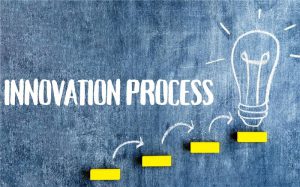Do you know the first model of technology? It’s a WHEEL. The screen on which you are reading this blog. The device on which you scroll shopping sites. The unit you use to charge the device.
The element you use to write on a book or draw on an iPad. All these are evidence of Technical Innovation. Technology is omnipresent.
You see it and that’s technology. Technology can appear in the simplest forms and even in complex forms.
In big size and small shape. It’s EVERYWHERE and in EVERY form. Technical innovation is a technical extension of innovation. The idea has a separate understanding in the fields of academics, science, and business.
It’s a process of implementing new ideas, experience, extensive knowledge from a technical perspective. Also, it focuses on solving problems and addressing needs through technical means.
So, it implies exploring new opportunities to improve the current value of goods and services. It focuses on enhancing user experience at reduced rates.
In this blog post, you’ll get detailed knowledge about Technical Innovation. It includes:
- Importance of Technical innovation
- Difference between Innovation and Technology
- Different Types and Examples of Technical innovation
- Strategy and many more…
So Let’s dive into the pool of Technical Innovation
Importance of Technical Innovation
The inception of Technology is itself a blessing to humanity. Its impact is on individuals, organizations, public institutions, and all networks. Above all, it has devised the ability to produce novel and creative products.
An important driver of success in the business world. The world is evolving along with technology. Therefore, the business’s success lies in staying updated with the latest technological changes.
Falling behind the technology will bring your business off track.
Let’s take the example of Kodak, which was once the world’s biggest photography company. Kodak failed to upgrade its picture clicking technology. Thus, Canon took this opportunity to grab the giant’s market.
Technical Innovation in Business has the power to position the company as a brand leader. Here are the important factors of technical Innovation:
- It gives a competitive advantage in the business market.
- It makes manufacturing and other business activities less complex.
- Advances in technical innovation had reduced the production process time.
- It makes the product obsolete at a rapid pace. Thus, shortening the product life cycle.
- Improvement in medical and health services etc.
Technical innovation offers wide opportunities for experimentation. It can never be limited. It evolves every day and every year. Thus making it important for businesses to keep up with technological trends.
Top 5 Examples of Technical Innovation
Until now the world has witnessed incredible tech innovations. From the Hanson robot, ‘Sophia’ to a digital smartwatch with electrocardiogram sensors. So, the potential for technical innovation never fails to amaze us.
Here are the top five examples of Technical innovation-

-
Artificial Intelligence
A study by Gartner reveals- 50% of AI investments will be quantified and linked to specific KPIs to measure the ROI. The AI impact will make devices smarter. So, it will replace most of the human interventions in transactions and processes.
It will reduce the time frame to complete a task. What takes months will take seconds to complete in the coming future.
Therefore, the greatest utilization of AI will be the replacement of cognitive functions for learning and solving problems by machines.
-
3D Printing
Imagine printing your favorite brand footwear or printing your favorite Iron Man costume. Yes, 3D printing is doing crazy wonders.
Previously 3-D printing technology had limitations. Until Harvard researchers started developing new 3-D printer inks.
The 3D printing industry was $9.9 billion in 2018 and is expected to grow rapidly. The industry will embark on a $34.8 billion valuation by the year 2024. The days are not far when humans can print anything they desire.
-
Robotics
Robotics is disruptive technical innovation. Robots have the potential to perform difficult and expensive activities. Above all, the world has started the use of robotic prosthetics, surgical systems, nanorobotics, in the medical field.
It is still at a growth stage. But during the booming stage, it can be proved as disruptive innovation.
-
Blockchain
Blockchain technology is decentralized, self-regulated, and encrypted technology. It’s a secure digital ledger for recording transactions. So, the popularity of blockchain is still on the lower side.
Its core feature is operating networks without central authorities. Thus reducing unwanted risks and transaction fees. It will sooner make a great revolutionary impact from the gaming industry to a government agency.
-
Autonomous vehicle
Modern Technology introduced self-drive cars, boats, drones, and many more vehicles. So, the automated feature uses advanced sensor systems for machine communication.
Tesla is the leading company in this industry. But we are still far from fully automated vehicles. So, the difficult part of autonomous vehicles is convincing the general public to trust and use the vehicle.
It can be a revolutionary change but still many questions are unanswered about its safety on the road.
Are Innovation and Technology the same?
A question that every innovator and tech geeks have. The answer is simple- Both are different. Both Innovation and Technology can go hand in hand. But never together. Hence, if one is ahead then the other one is behind.
Let’s see how…
- Innovation is a process of creating novelty. It includes ideating and continuous testing, experimenting, and rework. Moreover, technology is applying scientific and engineered knowledge for practical achievements in the industry.
- Technology is the development of machinery and devices using scientific knowledge. So, innovation is the development of the idea into reality.
- Not all innovations require technology. Let’s take the example of Toy production company LEGO.

The toy brand adopts a creative way to engage with the clients for generating new products.
It allows customers to create their product designs on their Create and Share site. So, one of their greatest successes is- Mini Big Bang Lego Theory Set.
A community-based product. When the idea reached 10,000 supporters, it got approved for production. And the community member got monetary compensation for the innovative idea.
Did you see technology here? It’s Innovation !!!
- Technology can be applied to implement the innovation process. But the former cannot produce innovation.
- Innovations are not always complicated like Technology for solving problems. For instance, it can sometimes be as simple as a piece of cake.
- Innovation is intangible and cannot create a widespread impact. Whereas technology can have an extensive impact and has tangibility.
- It has the power to make remarkable improvements in the business field. (We all know what a simple invention of the wheel has done !!!)
Different Types of Technical Innovation
Entrepreneurs and founders are always looking out to leverage existing Technology. Therefore, as the train of Technical innovation is rapidly moving and evolving, it’s important to get into the right coach.
Venturing into the right coach which is ahead in the market, has an impact on the business. Besides this, improving usability and upgrading technology also plays a big part.
Here are the four kinds of Technical Innovation based on their impact on the market:
-
Incremental Technical Innovation
Incremental technical innovation makes minor upgrades to the current product or methods.
In addition, it can be introduced to increase the speed of work, improve productivity, etc. For example, the Replacement of manual accounting by accounting software.
-
Disruptive Technical Innovation
It is a breakdown of conventional products or services. New technical innovation is considered ‘disruptive’ when it gains wide accessibility. And it is available to the population at affordable rates.
The best example is- Cloud Computing. In other words, a technology that provides big data storage and computing power to organizations
-
Radical Technical Innovation
The focus of Radical Technical Innovation is exploiting present competencies. It envisions the achievement of long-term goals. So, the idea is to replace the current product and bring novel experiences to the market.
Can you guess a radical technical innovator in the market?

Yes, It’s Netflix. Netflix changed the experience of the home entertainment industry.
Initially, it started with rental mail-order service which caught the eyes of cinephiles. So, with the rise of technology, it offered on-demand movies to the audience.
Their cost-effective and convenient approach allowed their upward movement in the market. They were able to capture competitors’ markets. Thus, displacing and bankrupting Blockbuster in 2010
-
Architectural Technical Innovation
It refers to Technical innovation to the architecture of the product. This innovation involves making improvements and applying architectural knowledge.
In other words, it comes with a single motto of- Maintaining the usefulness but enhancing the architecture.
Thus improving convenience and usability experience. For example, the architectural evolution of the Traditional photocopier to the digital photocopier.
Decoding the Differences: Technical Innovation, Scientific Innovation & Non-Technical Innovation
Let’s understand how technical innovation is different from scientific innovation and non-technical innovation.
-
Scientific Innovation vs Technical Innovation
Scientific is science. And science is an intellectual and practical branch of knowledge.
It comprises the study of the structure and behavior of the physical and natural world. In addition, extensive observation and experiments are integral to scientific innovation.
Most of the time scientific innovations are new inventions. So, if scientific innovations are based on the living & physical world. Then Technical innovation is to improve the standard of living in the physical world.
-
Non-Technical vs Technical Innovation
Non-technical innovation doesn’t have a technical element. But it’s an important element that complements and supplements Technical innovation.
Therefore, it is referred to as new organizational or marketing methods in the business firm.
The core of Technical innovation is to use new technologies and the application of technical knowledge.
Whereas the latter need not require a change in technology, or the adoption of new technology. So, it can be marketing or business innovation and both.
Technical Innovation Strategy
Successful Technical Innovation requires a well-crafted strategy. The success of one product is backed by evaluating 1000s of ideas. Hence, it requires project management, teamwork, planning, and implementation.
So far the world is facing cut-throat competition. The formation of a Technical Innovation Strategy will help in the mitigation of unforeseen failure.
Here are key considerations for Technical Innovation Strategy:
- Effective project management. It includes initiating, planning, implementing, monitoring, controlling, and closing.
- Collaborations with other entrepreneurs and forming an action team.
- Alignment of team activities towards a technical upgradation.
- Getting insights through customer feedback, surveys, interviews, and a deep understanding of pain points.
- Testing, pivoting and, altering the product. Until it reaches the customer’s expectations.
In addition, as per Abbie Griffin’s study, developing a world new product takes 53 months. Yes, the process is long. Thus, strategizing the process is of utmost importance for bringing a successful product to the market.
Hence, Netflix founded in 1997, took 12 years to displace its competitor, Blockbuster.
Conclusion
Technical innovation is an ever-evolving process. Today’s latest technology will be tomorrow’s outdated technology.
In addition, continuous upgrading and introducing innovations will maintain the flow of arrival of new technical solutions.
So, it requires collaborative participation of knowledge, capabilities, and ideas to bring a Technical innovation.
Incorporating technology into business activities will be a big boost. It will not only increase efficiency. So, it will also reshape the processes & core activities to solve problems through technical novelty.









